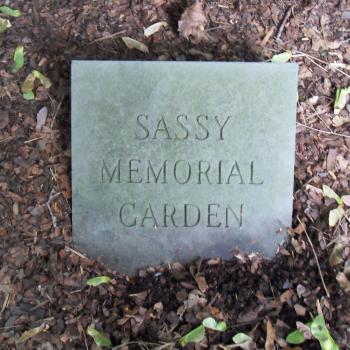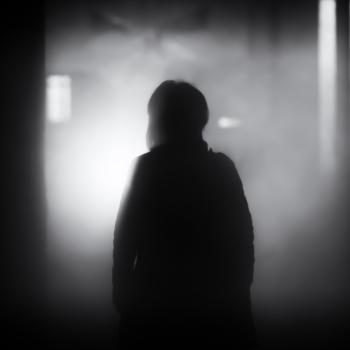 My friend Cindy’s memorial service was at the Quaker Meeting she’d attended for years. The program we were handed on entering had a photo of her on the front, and inside said simply:
My friend Cindy’s memorial service was at the Quaker Meeting she’d attended for years. The program we were handed on entering had a photo of her on the front, and inside said simply:
In the tradition of the Religious Society of Friends, this memorial service is held as a silent Meeting for Worship in which we remember our dear Friend and celebrate her life and gifts she brought to us. Friends hold that there is that of God within each of us, the Inner Light which speaks to us and through us in the silence of Meeting for Worship. Spoken messages and remembrances of Cindy out of this silence are encouraged. Friends allow a brief period of silence after each message as a time of reflection.
The room was packed, with overflow into the hall and library—testimony to all the lives Cindy had touched in her eighty-two years.
We all sat in silence. Then a man stood. “When I visited Cindy in the hospice section of the hospital, I saw her car in the parking lot. It had a bumper sticker saying ‘John Lennon.’ So at Cindy’s bedside I sang Lennon’s “Imagine” for her.” And then he sang it for us all.
Silence.
A man stood, identifying himself as Cindy’s ex-husband. He peacefully recalled the delights of their marriage and raising their children.
Silence.
A woman stood. “I’d known Cindy only slightly, but when I became ill some years ago, she was always at my house, raking the leaves, bringing groceries, even offering money to get me through.”
Silence.
A woman stood and recalled visiting Cindy in hospice a couple days before. “We’d been in a book group together, and right there on her deathbed she said enthusiastically: ‘There’s a new book you must read! You’ll love it! A local author wrote it…’”
Silence.
Marge, Cindy’s partner of the past thirty-one years, stood. With amazing composure and even joy she recounted an episode of Cindy’s last days in hospice, illustrating how Cindy retained her feistiness to the end. “The hospice staff knew I was Cindy’s partner, so they said to me, ‘Feel free to get into her bed and cuddle.’ So I did, trying carefully not to lie on any of the tubes she was attached to. After a little while Cindy said to me, ‘I love you, Marge, but…’ and she jabbed me with her elbow to get out of bed!”
Silence.
I stood and recalled being with Cindy at a protest soon after the Iraq war began. Students in the crowd were singing “War! What is it good for? Absolutely nothing!” Cindy began dancing to the music, singing as she crooked my arm in hers and spun me around. This was my image, I said, of Cindy’s joyful activism.
Silence.
Another woman stood. “When I would run into Cindy and Marge somewhere, it was as if a glow surrounded them. They always smiled warmly, as if I was exactly the person they were waiting for. And they did this for everyone they knew.”
Silence.
A man stood. “I was Cindy’s dissertation advisor. Her thesis was on ‘laughter in small groups’—how it can dissolve tensions and help bring people together. But what I most remember Cindy for, what I’m most grateful for, is what she did when our son was fourteen and angry at everyone. Cindy noticed this, and invited him to spend the summer with her and Walter and their kids on Nantucket Island. Her sensitivity and generosity—it was transformative for him.”
Silence.
A woman stood. “I used to visit Cindy and Marge at their country home. I admired Cindy for placing a conservation easement on her property to legally limit the use of the land and protect its conservation values. She cared so much about the natural environment; she didn’t want this beautiful land to be lost to development.”
Silence.
An African-American woman stood. “Many years ago, I would ride the bus to Geneseo [where the state college is, about an hour away]. I’d get on the bus, uncomfortable as the only non-White person. A woman in the middle of the bus would smile at me, inviting me with her look to sit by her. And so I did. Cindy made me feel welcome, in a way I’d never felt before.”
Silence.
My friend Elaine stood. “What I treasure most about Cindy was her smile when she’d bump into you somewhere. It started from her eyes, then lifted her whole face. She’d greet me with ‘Elaine, how are you?’ And she’d mean it.”
And so it went, for about an hour and a half. Silence; words for a memory of Cindy’s life; silence.
Toward the end, sitting in the silence, I had a flashback to the way my colleague David Impastato and I used to open the Poetry Retreats we led. We’d facilitate what we called a “group lectio divina” on a poem from David’s anthology of contemporary Christian poetry, Upholding Mystery. We’d hand out the poem, often Denise Levertov’s “Flickering Mind.” We’d ask everyone to read it silently. We’d pause. Then we’d invite people to speak only a single word or phrase that touched them.
Out of the silence, eventually someone would say a word or phrase from the poem. Silence. Then someone else would say a word or phrase from the poem. Silence. Another phrase spoken. Silence. And so on.
By the end of the process, when everyone had said the word or phrase that most touched them, often the whole poem had been spoken! Not in its original order, of course, yet still the whole poem.
And as with the poem, so it was with Cindy’s life at her memorial service. Out of the memories of each of us—spoken aloud, then reflected on in silence—a whole took shape. It was the whole of Cindy’s life, the beautiful art she had made of her life, now made present among us.
Peggy Rosenthal is director of Poetry Retreats and writes widely on poetry as a spiritual resource. Her books include Praying through Poetry: Hope for Violent Times (Franciscan Media), and The Poets’ Jesus (Oxford). See Amazon for full list. She also teaches an online course, “Poetry as a Spiritual Practice,” through Image’s Glen Online program.
Image Used: Pae White, Inverted Leaf/California Sycamore, 2009, bronze cast of a sycamore leaf, 9.00″ x 9.00″












